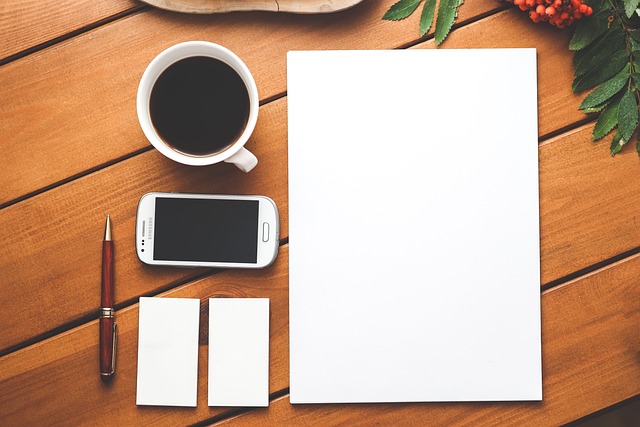Understanding the Creativity Mindset
Creativity and innovation thrive in an environment that actively nurtures them. But what does it mean to cultivate a creativity mindset? At its core, a creativity mindset refers to the ability to think outside the box, explore new ideas, and embrace originality. It’s about being open to experiences and possibilities in ways that foster growth and transformation. Anyone can develop this mindset, alongside their personal success journey. The process requires dedication, self-awareness, and a willingness to step beyond the conventional.
The first step in nurturing a creativity mindset involves recognizing one’s current thought patterns. Often, we confine ourselves within strict frameworks that limit our potential. To embrace creativity, individuals need to challenge these preconceived notions. This can involve exploring new hobbies, engaging in different forms of art, or seeking out diverse perspectives from various fields. Transitioning your thoughts from “I can’t” to “How can I?” sets the stage for innovative thinking. It encourages deep introspection and removes mental barriers that hinder creativity.
Additionally, creating a supportive environment significantly boosts the potential for innovation. Surrounding yourself with diverse ideas and influences fosters inspiration. Where you work and the people you engage with can either ignite your creativity or stifle it. Consider immersing yourself in communities that celebrate originality, whether through collaborative projects, workshops, or social gatherings. Collaboration fuels collective creativity. When individuals come together, they share experiences and ideas that spark innovative approaches.
The Role of Curiosity in Fostering Innovation
Curiosity acts as a catalyst for innovation. It drives individuals to ask questions, seek answers, and challenge the status quo. Possessing a curiosity mindset means you approach the world with wonder and an eagerness to learn. This can radically influence your ability to innovate. When curiosity is at the forefront, the desire to explore and understand propels you toward new territories of thought, ultimately strengthening problem-solving skills.
One way to harness curiosity is through active learning. Instead of passively consuming information, engage with what you learn. Take notes, ask questions, and conversely, share perspectives. This can lead to unexpected insights. Allowing your mind to wander is equally important. Unstructured time can feel more productive if you adopt a curious outlook on the world around you. Whether strolling in nature or simply observing day-to-day life, moments of reflection provide fertile ground for innovative ideas to develop.
Moreover, curiosity correlates strongly with resilience. When faced with failures or setbacks, a curious individual steps back and asks, “What can I learn from this?” rather than feeling defeated. This approach not only fosters innovation but also contributes to personal success by cultivating a growth mindset. Resilience keeps individuals moving forward, continuously redefining their paths. Embracing failure as a stepping stone rather than an endpoint allows for the freedom to explore and innovate.
Embracing Risk for Greater Rewards
In the realm of creativity and innovation, taking risks often leads to the most significant breakthroughs. Creativity demands an acceptance of uncertainty and the willingness to explore uncharted territory. By understanding that every innovative idea carries some level of risk, you gain the confidence to act on your creative impulses. It’s essential to shift the narrative around risk; instead of fearing failure, envision it as an opportunity for growth.
Many breakthroughs in both art and science emerged from risk-taking. The stories of famous inventors and artists reveal a common thread: they embraced vulnerability and failure. Whether it be Thomas Edison with the light bulb’s multiple iterations or J.K. Rowling, who faced countless rejections before publishing Harry Potter, their journeys exemplify the power of perseverance and the willingness to take calculated risks. These narratives serve as inspiration, reminding us that innovation often stems from an unyielding belief in one’s creative vision.
To adopt a risk-taking mindset, start by redefining what failure means to you personally. Instead of seeing it as a negative outcome, think of it as valuable feedback. This perspective encourages experimentation without fear of consequence. Look for small, manageable risks you can take regularly. This could involve sharing your ideas with a friend or trying out a new approach at work. Over time, these small steps accumulate into significant innovations and enhance your creativity mindset.
The Importance of Continuous Practice and Reflection
Fostering a creativity mindset isn’t a one-time task—it’s a continuous journey. It demands regular practice and reflection. Establishing routines that encourage creativity can create a wealth of innovative ideas and solutions over time. For instance, setting aside specific times throughout the week to engage in brainstorming sessions or creative pursuits can be incredibly beneficial. This dedicated time should be free from distractions. It allows you to delve deep into your imagination and explore various concepts freely.
In addition to structured creativity sessions, maintaining a reflective journal can significantly enhance your creativity and innovation skills. By documenting thoughts, questions, experiences, and feelings, you create a personal repository of ideas to draw upon later. Furthermore, writing facilitates clarity in identifying your interests and passions. While reflecting on past experiences, discover patterns and insights that inform your future creative pursuits.
Moreover, incorporating mindfulness practices into your daily routine enables you to remain present and focused. Mindfulness enhances observation skills and enriches your understanding of yourself and the world. Techniques such as meditation allow cognitive spaces for creative thoughts to blossom. The fusion of practice and reflection establishes a rhythm that continuously nurtures your creativity mindset, leading to greater personal success in your endeavors.
Collaboration: Fueling Creative Synergy
Innovation rarely happens in a vacuum. Collaborative efforts often lead to the most groundbreaking ideas. In any setting—whether in the workplace, academic environments, or artistic endeavors—collaboration introduces diversified insights, fostering synergy that heightens creativity. Working with others allows you to pool different perspectives and expertise, making way for more comprehensive solutions to complex problems.
Throughout history, significant innovations stem from collaborative efforts. Think of renowned painters who created together, or innovators from different backgrounds who merged their expertise to develop new technologies. These collaborations often marry various fields of knowledge, leading to unexpected successes. When you team up with different individuals, your creativity expands exponentially. You discover new angles on familiar topics, helping you break free from conventional thinking. Embrace teamwork as a cornerstone of your innovation strategy.
Moreover, effective communication plays a pivotal role in fruitful collaboration. To reap the benefits of teamwork, ensure that ideas flow freely among peers. Establish an environment where individuals feel safe and comfortable to express their thoughts without judgment. Welcome constructive feedback as a vital part of the collaborative process. Active listening and articulating thoughts clearly build a foundation for mutual respect and creativity. A robust collaborative ecosystem enhances both innovation and personal success, creating a culture that values diverse contributions.
Understanding the Balance Between Structure and Freedom
Successful innovation thrives in a balanced environment where structure meets freedom. On one hand, a structured framework can provide direction and accountability, essential quality control measures that ensure ideas evolve systematically. On the other hand, allowing space for free exploration unleashes creativity. Consequently, striking the right balance between these two elements proves critical in nurturing your creativity mindset.
Establishing routines that promote discipline can aid in cultivating creative habits. These routines serve as a springboard for your creative endeavors while maintaining a sense of order. Incorporating specific time blocks dedicated to creativity into your daily schedule can help frame your creative sessions. However, allow yourself to remain flexible. Rigidity can stifle creativity. Instead, encourage spontaneity within the structure. Blend structured brainstorming with unbridled exploration, fostering an experimental approach towards innovation.
Moreover, periodically reassessing your framework allows you to remain adaptable as your creativity evolves. This means revisiting your methods and being willing to pivot when necessary. If you notice that certain habits stifle your creativity, don’t hesitate to adjust your approach. Innovation demands adaptability, and acknowledging when to shift gears creates room for fresh perspectives to flourish. The interplay between structure and freedom enables a comprehensive exploration of your creative capabilities, ultimately driving personal success forward.
Overcoming Creative Blocks
With any creativity journey, one inevitably encounters creative blocks. These obstacles can emerge for various reasons, like self-doubt, fear of failure, or external pressures. The good news, however, is that there are practical strategies to overcome these blocks. Addressing them directly can reinvigorate your creativity mindset and fuel innovation, helping to further your personal success.
One powerful technique involves reframing negative thoughts. When you catch yourself thinking, “I can’t be creative,” challenge that notion by asking, “What makes me think that?” Often, this leads to realizations based on fear rather than fact. Replace the negative thought with a more positive affirmation like, “I have the power to create something unique.” Furthermore, engaging in physical activity can alleviate stress and help clear mental fog. Exercise stimulates endorphins, encouraging a more uplifted mindset. It becomes easier to think creatively after a brisk walk or workout.
Additionally, embracing a different perspective serves as a powerful antidote to creative blocks. Consider changing your environment. A fresh setting sparks inspiration, allowing new ideas to flow. Traveling to new locales or working in different spaces can break monotonous habits. Sometimes, even taking a break and stepping away from a project allows the brain to reset and rejuvenate. Upon returning, you might find solutions to problems that once felt insurmountable. By adopting these strategies, you minimize the influence of creative blocks and keep the momentum of innovation moving forward.
Conclusion: The Lifelong Journey of Creativity and Innovation
Embracing a creativity mindset serves as a lifelong journey marked by exploration, reflection, and growth. Every step taken towards nurturing your creativity opens doors to a world filled with possibilities. Innovation requires persistence, collaboration, risk-taking, and a strong sense of curiosity. Each individual’s creative journey reflects their unique experiences and perspectives, contributing to a vibrant tapestry of ideas.
As you continue on this path, remember that personal success does not hinge solely on outcomes but rather on the process of discovery itself. Celebrate every innovative thought, each moment of reflection, and every collaboration, for these represent the essence of creativity. By committing to this journey, you empower yourself to break through boundaries, inspire others, and ultimately transform the world around you.
FAQ
- What is a creativity mindset?
- A creativity mindset is the ability to explore new ideas, think outside the box, and embrace originality for personal growth and success.
- How can curiosity enhance innovation?
- Curiosity drives individuals to ask questions and learn, leading to fresh insights and innovative solutions that may not arise from conventional thinking.
- What role does collaboration play in fostering creativity?
- Collaboration introduces diverse perspectives, fueling creative synergy. Working with others often leads to breakthroughs that individuals may not achieve alone.
- How can I overcome creative blocks?
- Reframe negative thoughts, engage in physical activity, change your environment, and take breaks to alleviate creative blocks and re-inspire your creativity.
- Is it possible to develop a creativity mindset over time?
- Absolutely! Developing a creativity mindset is a continuous process that involves practice, reflection, and a willingness to take risks and learn from failures.



